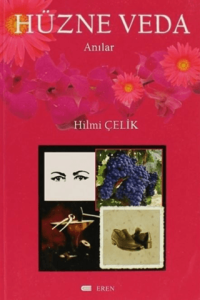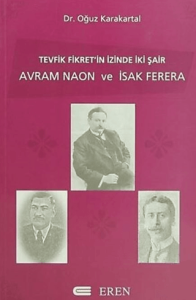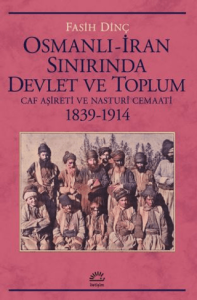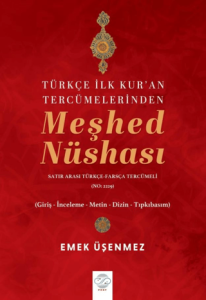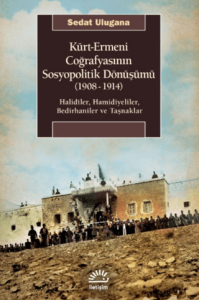
The art of knotted-carpets is a gift of the Turks to world civilization; its history through the centuries is woven into the fabric of Turkish culture. Since its basic material is wool, carpet weaving is an activity of sheep raising communities. And in fact the word' sheep' (koyun) has often been incorporated into some of the famous names of Turkish tribes, for example, the Karakoyunlu and the Akkoyunlu.
Recent investigations have shed new light on the much discussed question of whether the origins of Turkish carpet art go back in ancient times to the Pazyryk carpet or not. On the horse trappings found in Pazyryk and now preserved in the Hermitage Museum, Leningrad, are some inscriptions in Gökturc script inscribed in the wood. Osman Nedim Tuna, a Turcologist at the University of Pennsylvania, has deciphered some Turkish words in the inscription and has been trying to establish a meaningful link between them. Thus the relationship of the Pazyryk mounds with the Huns becomes clearer.
Among the small carpet fragments of the 3rd and 4th centuries found by Sir Aurel Stein in East Turkestan besides those tied with a single weft is another fragment with a pattern of lozenge. ft shows a different technique, Turkish knots (Gördes) tied to alternate wefts. In Anatolia this technique, an old tradition, goes back to the Selçuk Period. A nomad carpet in the Museum of Turkish and Islamic Arts, Istanbul (Inv.191; 111. J9) shows a continuation of this old tradition not only with its technique but also with its motifs. This technique, which was brought to Anatolia by the Oghuz Turks, has survived up to the middle of the 19th century. In it the Turkish knot is used in a different manner; the knots are tied to the weft in two different ways in alternate rows.
According to the investigations of Şerare Yetkin, a carpet fragment (42x29.5 cm) in the storeroom of the Museum of Islamic Art, Berlin closely resembles this nomad carpet (III.19) in technique and motifs. Two similar carpets have recently been sold in London by Lefevre and Partners. Two more carpets which show the same technique and motifs are in the Rijks-museum, Amsterdam and in the Textile Museum, Washington, DC. It has also been established that the same technique has been applied on the border of the large Selçuk carpet with the motifs of the 'camel foot' in the Museum of Turkish and Islamic Arts, Istanbul.
Carpet art in every historical period has been related to other arts and shows a parallel development. In the first half of the 16th century the painter Ustad Shah Kulu of the Ottoman Palace Workshop (Nakkaşhane) created a new style of painting called the 'reed style' (Saz üslubu) which was different f rom that used in the classical miniatures. It was one based on a tradition which goes back to the 14th and 15th centuries. In this style, color and line combine with each other forming the basic element with the same values and contours. Serrated leaves, called 'reeds' (saz) , hatayı and buds which appear in the paintings of this style have influenced textile, illumination, ceramic tile and Palace carpet designs of the period. Dragons, phoenixes, deer and pheasants which also appear in the paintings of the 'reed style' sometimes appear in the Ottoman tiles such as those in the Circumcision Room and the Baghdad Kioshk in the Topkapi Palace, Istanbul. But they were never used as the main motif s as were the serrated leaves, hatayis and the buds.
The art of knotted-carpets is a gift of the Turks to world civilization; its history through the centuries is woven into the fabric of Turkish culture. Since its basic material is wool, carpet weaving is an activity of sheep raising communities. And in fact the word' sheep' (koyun) has often been incorporated into some of the famous names of Turkish tribes, for example, the Karakoyunlu and the Akkoyunlu.
Recent investigations have shed new light on the much discussed question of whether the origins of Turkish carpet art go back in ancient times to the Pazyryk carpet or not. On the horse trappings found in Pazyryk and now preserved in the Hermitage Museum, Leningrad, are some inscriptions in Gökturc script inscribed in the wood. Osman Nedim Tuna, a Turcologist at the University of Pennsylvania, has deciphered some Turkish words in the inscription and has been trying to establish a meaningful link between them. Thus the relationship of the Pazyryk mounds with the Huns becomes clearer.
Among the small carpet fragments of the 3rd and 4th centuries found by Sir Aurel Stein in East Turkestan besides those tied with a single weft is another fragment with a pattern of lozenge. ft shows a different technique, Turkish knots (Gördes) tied to alternate wefts. In Anatolia this technique, an old tradition, goes back to the Selçuk Period. A nomad carpet in the Museum of Turkish and Islamic Arts, Istanbul (Inv.191; 111. J9) shows a continuation of this old tradition not only with its technique but also with its motifs. This technique, which was brought to Anatolia by the Oghuz Turks, has survived up to the middle of the 19th century. In it the Turkish knot is used in a different manner; the knots are tied to the weft in two different ways in alternate rows.
According to the investigations of Şerare Yetkin, a carpet fragment (42x29.5 cm) in the storeroom of the Museum of Islamic Art, Berlin closely resembles this nomad carpet (III.19) in technique and motifs. Two similar carpets have recently been sold in London by Lefevre and Partners. Two more carpets which show the same technique and motifs are in the Rijks-museum, Amsterdam and in the Textile Museum, Washington, DC. It has also been established that the same technique has been applied on the border of the large Selçuk carpet with the motifs of the 'camel foot' in the Museum of Turkish and Islamic Arts, Istanbul.
Carpet art in every historical period has been related to other arts and shows a parallel development. In the first half of the 16th century the painter Ustad Shah Kulu of the Ottoman Palace Workshop (Nakkaşhane) created a new style of painting called the 'reed style' (Saz üslubu) which was different f rom that used in the classical miniatures. It was one based on a tradition which goes back to the 14th and 15th centuries. In this style, color and line combine with each other forming the basic element with the same values and contours. Serrated leaves, called 'reeds' (saz) , hatayı and buds which appear in the paintings of this style have influenced textile, illumination, ceramic tile and Palace carpet designs of the period. Dragons, phoenixes, deer and pheasants which also appear in the paintings of the 'reed style' sometimes appear in the Ottoman tiles such as those in the Circumcision Room and the Baghdad Kioshk in the Topkapi Palace, Istanbul. But they were never used as the main motif s as were the serrated leaves, hatayis and the buds.











